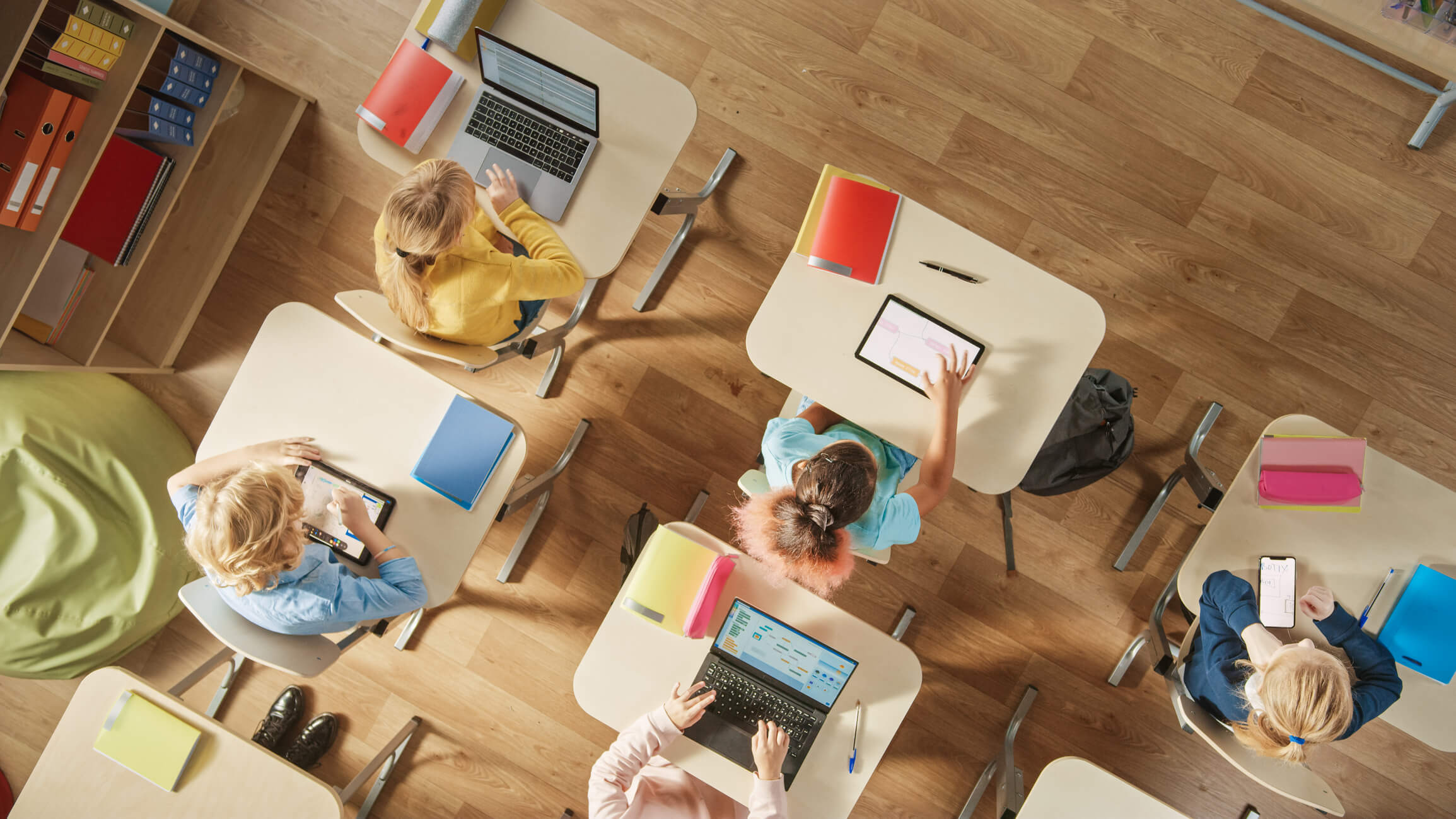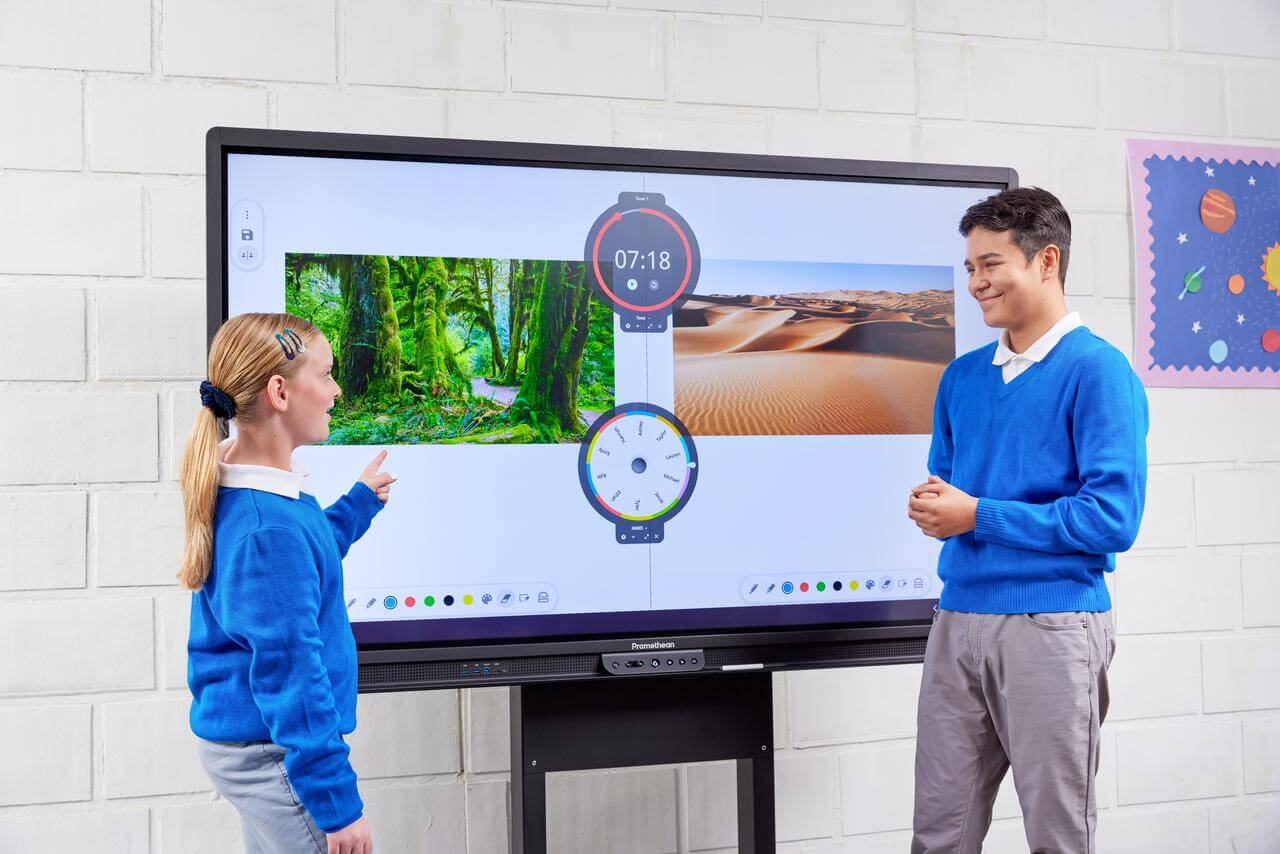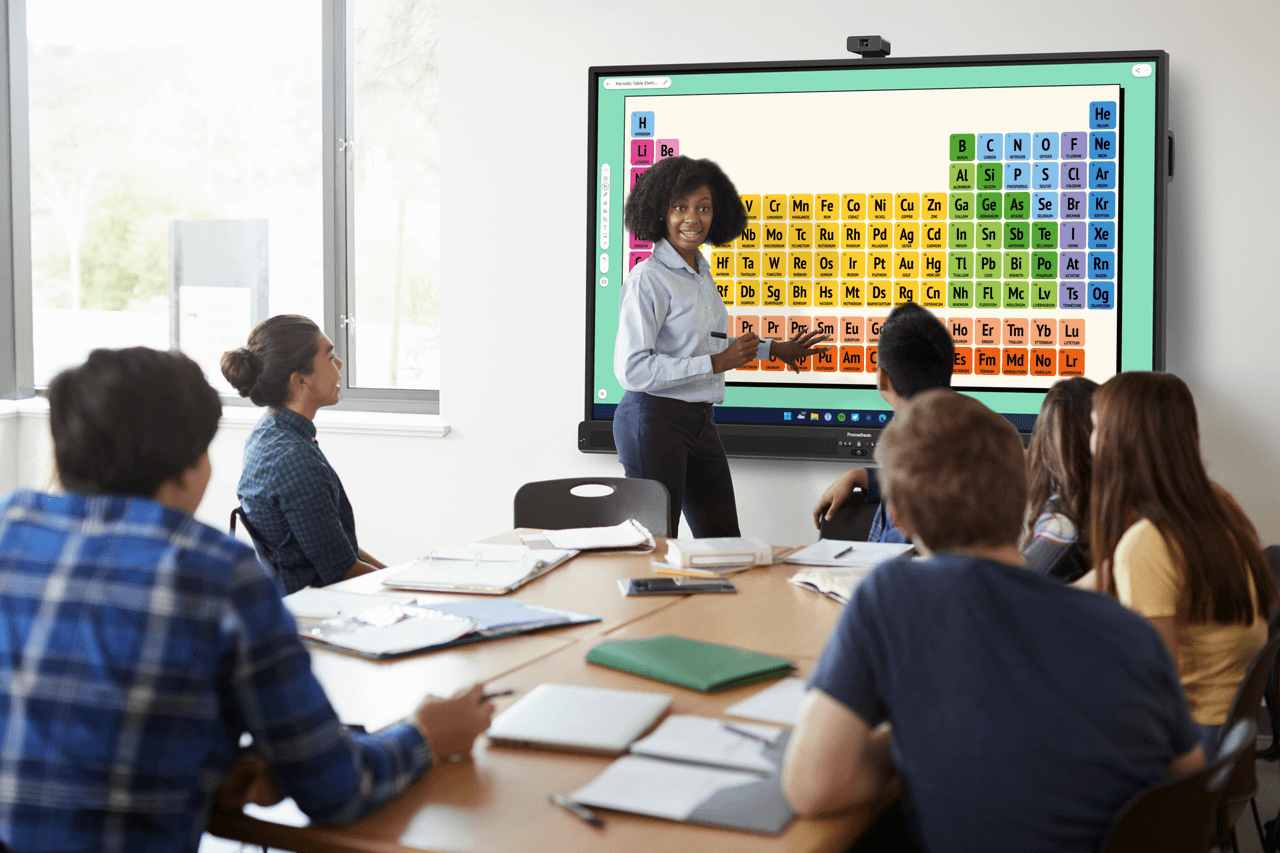Published on December 13th, 2022
Helping kinesthetic learners thrive in the modern classroom
6 minute read
Some children learn best by listening, others by seeing, and others by doing. This last group is known as “kinesthetic” or “tactile” learners, and they absorb the most information by physically interacting with their environment.
Kinesthetic learners are a fascinating bunch, and they’re only growing in number. According to a study by professor Muneera Spence, auditory learners account for roughly 25% of the population, visual learners make up about 30%, and kinesthetic learners account for nearly 45% of the population.

Incorporating kinesthetic learning style in lesson plans is crucial for helping tactile scholars absorb information. Keep reading to learn more about the kinesthetic learning style and how you can easily incorporate it in your classroom with Promethean’s intuitive smart panels for K-12 classrooms.
What is kinesthetic learning?
Kinesthetic learning requires students to physically touch or manipulate objects. By interacting with items in their environment, kinesthetic learners feel more connected with their surroundings, improving their ability to absorb new information.
While this type of learning is commonly associated with younger students, kinesthetic teaching techniques can (and should) be used in lessons at any age. Students who touch, move around, and create things are engaging in kinesthetic learning, but it’s important to remember that not all children will show the same traits in the same way.
The biggest bookworm in your class must participate in hands-on activities from time to time, but you’ll recognize a true tactile learner when you see one – they’ll be the first out of their seat when you announce an activity (they may already be out of their seat).
Common characteristics of kinesthetic learners
Kinesthetic learners are often physically coordinated and curious. They don’t like sitting still for long periods of time and they may have trouble concentrating in oral lessons.
Of course, not every student who can’t sit still is a kinesthetic learner – some children just have extra energy. But most kinesthetic learners share many of the same characteristics. Look out for the following kinesthetic clues. If a student shows four or more of these traits, they’re likely a tactile learner:
- Prefers tangible rewards (stickers, candy, etc.)
- Uses hand motions and physical cues when speaking
- Enjoys participating in lessons and activities
- Often in motion
- Likes to be outdoors or in nature
- Eager to try new things
- Needs to physically work through problems
- Constantly plays with a classroom item or “fidget” toy.
Modern technology and education tools help kinesthetic learners
Advancements in educational technology have opened up a variety of new avenues for educators. These tools can be used to create a variety of targeted and multi-sensory learning experiences.
Educational software
Explosive development in edu-software over the last two decades changed how the average classroom functions. Modern educators use all types of programs and applications to manage their jobs more effectively – both from an administrative standpoint and from the educational side of things.
Programs like Freckle and Kahoot! help engage students. Meanwhile, Student Information Systems (SIS) like Infinite Campus or Gradelink give parents and students easier access to their records and educational performance.

Tablets
Tablets have proved to be an exceptionally flexible tool for educators. The ability to pre-load devices with apps and other learning tools helps educators provide a standardized learning experience – regardless of what a student’s access to technology might be like at home.
Interactive display boards / smart panels
For educators looking to make meaningful changes to their classrooms, smart panels open up many exciting new teaching opportunities.

From screen sharing and recording to live video projection and simultaneous browser display, interactive display boards empower teachers. Educators will find more control over how they deliver their lessons and more appealing ways to engage students.
Professional tools for all learning types
As a teacher, helping children absorb new lessons and connect distinct ideas is your goal. Modern tech puts it closer within reach.
By using educational technology like smart panels, educators are primed to create more effective lessons for not just their tactile students, but for their visual and auditory learners as well.
Request a live demo of the Promethean ActivPanel to see how interactive displays can support every learner.




